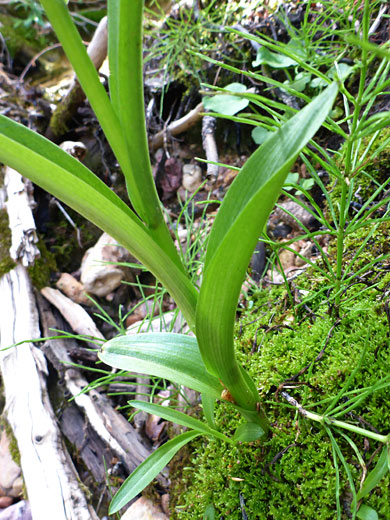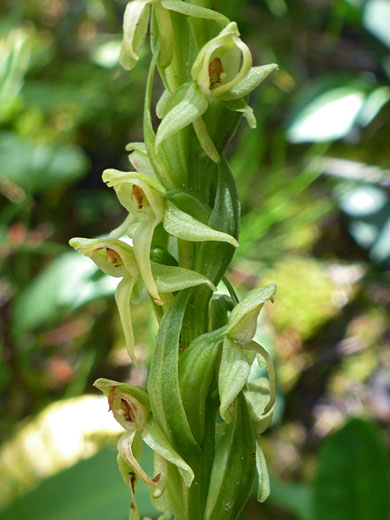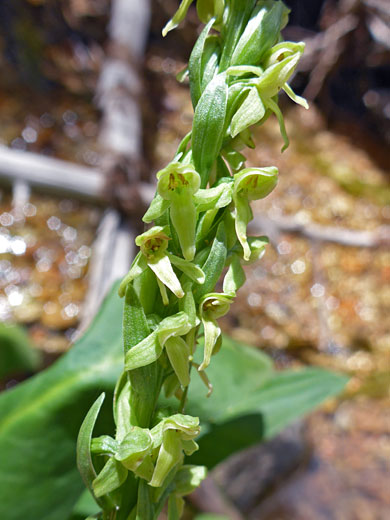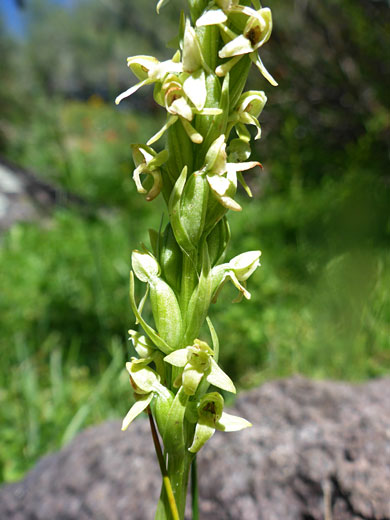Platanthera Huronensis, Green Bog Orchid
Plants > Wildflowers > Orchidaceae > Platanthera Huronensis

Platanthera huronensis (green bog orchid), Shooting Star Creek, Ramparts Trail, Cedar Breaks National Monument, Utah
Common names:
Green bog orchid, Huron green orchid
Family:
Scientific name:
Platanthera huronensis
Synonym:
Habenaria hyperborea var huronensis
Main flower color:
Range:
The Rocky Mountain states, and Washington
Height:
Up to 40 inches
Habitat:
Bogs, wet meadows, streambanks, lakeshores, seeps, from sea level to 10,800 feet
Leaves:
Linear to narrowly oblong or lanceolate, up to 10 inches long and 3 inches wide
Season:
June to August
Platanthera huronensis is most common across the Rocky Mountains, from New Mexico to Idaho and Washington; it also occurs across the high ground of southern Utah. Plants are relatively tall, up to 3 feet, with stout, rigid stems bearing small numbers of leaves at scattered, widely-spaced intervals, reduced to bracts towards the tip. Leaves are ascending rather than spreading. Flowers are usually densely arranged but the inflorescence can sometimes be much more open.
Flowers are usually whitish green rather than yellow-green, and the three petals are lighter in color than the three sepals. Lateral sepals are spreading, or slightly angled downwards, while the upper sepal forms a hood with the two upper petals. The lip of the lower petal is linear to narrowly lanceolate in shape, rounded at the tip, while the narrow spur, similar in length (up to half an inch) is cylindrical or club-shaped. Anther sacs are nearly parallel or slightly diverging.
Flowers are usually whitish green rather than yellow-green, and the three petals are lighter in color than the three sepals. Lateral sepals are spreading, or slightly angled downwards, while the upper sepal forms a hood with the two upper petals. The lip of the lower petal is linear to narrowly lanceolate in shape, rounded at the tip, while the narrow spur, similar in length (up to half an inch) is cylindrical or club-shaped. Anther sacs are nearly parallel or slightly diverging.
All Contents © Copyright The American Southwest | Comments and Questions | Contribute | Site Map









